If you’ve ever tried pulling meaningful insights from your last batch of quizzes, you know the pain. The data is there, somewhere, but between messy spreadsheets, limited question formats, and tools that can’t talk to your student information system, it feels like you’re working harder than the software.
Teachers are asking for more than just a way to give tests. They want assessment tools in teaching that:
- Work for every subject, whether it’s quadratic equations, Spanish grammar, or chemical formulas.
- Support learners of all tech skill levels without turning setup into a training marathon.
- Keep assessments fair and secure with anti-cheating measures that actually work.
- Deliver instant, visual insights, so you can adjust your teaching before the next lesson, not after the term ends.
This guide takes a clear, honest look at assessment tools in education. I’ll cover what assessment tools in teaching are, give teachers practical examples, and show how to pick the right tools for your classroom goals and student learning styles.
What Are Assessment Tools in Teaching?
Let me break this down in simple terms. Assessment tools in teaching are digital or physical instruments that help you evaluate what your students know and can do, but they’re so much smarter than traditional tests. Think of them as your teaching analytics dashboard.
While that old paper quiz might tell you “Sarah got 8 out of 10,” a modern teacher assessment tool tells you “Sarah struggles with fractions but excels at word problems, and she learns best with visual examples.” See the difference?
These tools serve three purposes that I consider non-negotiable for effective teaching:
- Tracking progress: You can follow both individual and class performance through reports and dashboards.
- Identifying learning gaps: It’s easier to spot where students are struggling early than to wait until it becomes a bigger problem.
- Supporting data-driven instruction: The results give you actionable direction to adjust lessons so every student benefits.
That’s the big difference between today’s assessment tools in education and old-school tests. Instead of ending the learning process, they extend it, providing continuous insights, quick feedback, and easy integration with LMS systems to make teaching more responsive.
Watch: How to Use Online Quiz Maker for Teachers
Why Assessment Tools Matter More Than You Think
I’ll be straight with you, the research on this is compelling. Students who receive regular, detailed feedback through digital assessment platforms improve their performance by up to 30%. But let me tell you why this matters in your day-to-day teaching life.
1. You’ll Actually Get Your Evenings Back
Remember those Sunday afternoons spent creating performance charts by hand? I’ve watched teachers save 3-4 hours weekly when they switch from manual grading to automated assessment platforms. That’s time you can spend planning engaging lessons instead of calculating averages.
Instead of manually highlighting patterns in student responses, these tools for assessment in education automatically generate visual analytics that show you exactly where your class stands. You’ll spot trends in seconds, not hours.
2. Your Students Will Actually Want to Participate
Here’s something that surprised me early in my career: interactive assessment formats maintain student attention and participation rates higher than traditional testing methods. Your students stop seeing assessments as punishment and start viewing them as part of the learning experience.
I’ve seen quiet students become active participants when assessments include gamified elements, multimedia, and immediate feedback. It’s like switching from black-and-white TV to high-definition; everything becomes more engaging.
3. You’ll Finally Reach Every Learner
Modern assessment tools accommodate the diverse learning styles in your classroom through multiple question formats, audiovisual elements, and adaptive difficulty levels. This isn’t just nice to have, it’s essential for equitable education.
Watch: 20+ Question Types for Online Learning & Assessment
4. You Can Adjust Your Teaching in Real-Time
This is where assessment tools in education really shine. Instead of waiting weeks for test results to tell you what went wrong, you get immediate data that lets you adjust your instruction the next day. Are your students struggling with yesterday’s concept? You’ll know before tomorrow’s lesson and can address it immediately.
Quick Decision Guide – When to Use Assessment Tools vs. Traditional Methods:
- Use digital tools when you want frequent feedback and detailed analytics
- Stick with traditional methods for high-stakes evaluations requiring maximum security
- Combine both approaches for the most comprehensive evaluation strategy
- Choose digital when you need immediate results and student engagement
9 Types of Assessment in Teaching (And When to Use Each)
Let me organize this in a way that actually makes sense for your lesson planning. I’ve grouped these by how you’ll use them in your classroom.
Assessment for Learning (Your Teaching GPS)
1. Diagnostic Assessments are like a GPS for your instruction; they tell you where your students are before you start the journey. I use these at the beginning of units to see what my learners already know and what misconceptions they might have.
What works best: Adaptive questionnaires that adjust based on student responses, skills mapping platforms, and quick knowledge checks.
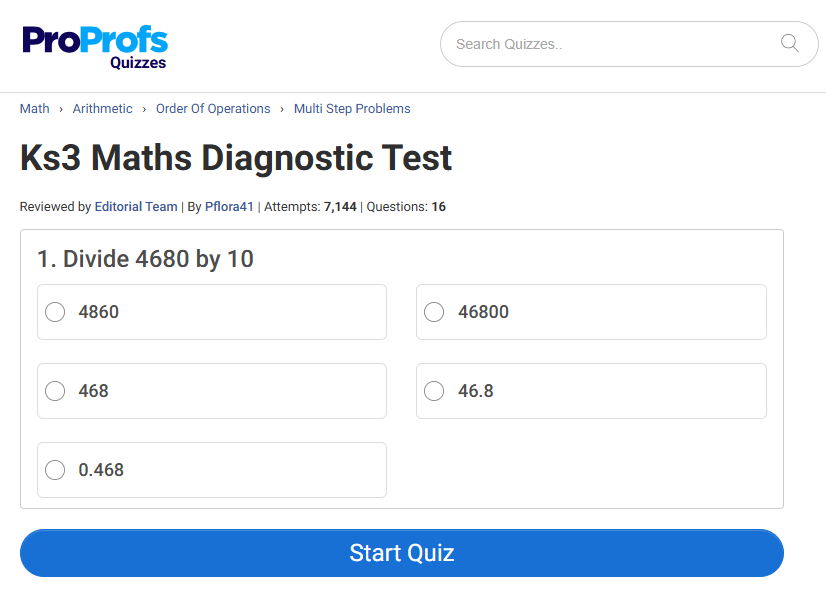
2. Formative Assessments are your teaching speedometer. They show whether the pace is too fast, too slow, or just right. Tools such as exit tickets, quick polls, and mini-quizzes provide instant feedback on student understanding, helping instructors adjust lessons in real time.
What works best: Interactive polling systems, real-time feedback tools, and micro-learning platforms that students can access anytime.
3. Ipsative Assessments focus on individual student growth rather than comparisons. I love these because they help students see their own progress, which is incredibly motivating.
What works best: Portfolio platforms, progress tracking systems, and self-reflection tools.
Assessment of Learning (Your Proof of Learning)
4. Summative Assessments are your final report card on student learning. These are your end-of-unit tests, final projects, and comprehensive evaluations.
What works best: Comprehensive testing platforms, secure examination software, and project submission systems.
5. Norm-Referenced Assessments compare your students to others nationwide. Think SAT, ACT, and state standardized tests. You probably don’t choose these, but understanding them helps you prepare your students.
What works best: Standardized testing platforms and comparative analytics systems.
6. Criterion-Referenced Assessments measure whether your students have mastered specific academic writing skills or standards. These align with your curriculum objectives.
What works best: Standards-aligned assessment platforms and mastery tracking systems.
Assessment as Learning (Student-Centered Growth)
7. Self-Assessments teach your students to evaluate their own learning. I’ve found these incredibly powerful for developing metacognitive skills and student ownership of learning.
What works best: Reflection platforms, self-evaluation surveys, and personal learning dashboards.
8. Peer Assessments get your students involved in evaluating each other’s work. This builds critical thinking and communication skills while giving you insights into student understanding.
What works best: Collaborative review platforms, peer feedback systems, and group evaluation tools.
9. Authentic Assessments connect learning to real-world applications. They show whether students can actually use what they’ve learned outside of the classroom.
What works best: Portfolio systems, presentation platforms, and practical application assessment tools.
10 Assessment Tools That Actually Work in Real Classrooms
Here is a list of some of the most popular assessment tools and software options available for teaching purposes. Let’s review each with its pros and cons to get a better idea.
But before a detailed review, here’s a table for a quick glance:
| Assessment Tools in Teaching | Best Features | Pricing | User Ratings (G2) |
|---|---|---|---|
| ProProfs Quiz Maker | AI quiz generator, 100,000+ templates, 20+ question types, auto grading, LMS integration | Free for short quizzes and all essential features. Paid starts at $19.99/month | 4.4/5 |
| Google Forms | Free quizzes, auto data to Sheets, real-time tracking, collaboration | Paid from $12/user/mo | N/A |
| Kahoot | Gamified quizzes, live/async modes, quiz library, instant feedback | Paid from $19/host/mo | 4.6/5 |
| Flip | Video responses, group discussions, LMS integration, media support | Custom pricing | 4.8/5 |
| Mentimeter | Live polls/quizzes, real-time analytics, multimedia, slide integration | From $11.99/presenter/mo | 4.7/5 |
| Socrative | Formative quizzes, instant feedback, quiz library, multi-language | From $9.99/seat/mo | 4.5/5 |
| Jotform | Drag-drop builder, templates, real-time data, app integrations, payments | Paid from $34/mo | 4.7/5 |
| Quizlet | Flashcards, curriculum-aligned sets, games, collaborative learning | Paid from $1/mo | 4.5/5 |
| CommonLit | Literacy assessments, large text library, guided reading, analytics | From $2,500/year/school | N/A |
| iSpring QuizMaker | SCORM quizzes, LMS-ready, branching scenarios, collaborative authoring | From $470/author/year | 4.7/5 |
1. ProProfs Quiz Maker – Best for Easily Creating Secure Quizzes With AI or Templates
I’ve found ProProfs Quiz Maker to be a wonderful tool in teaching, particularly for creating quizzes and assessments. It has an AI quiz generator that helps you generate all kinds of quizzes in just a few seconds. Plus, you get an extensive library of 100,000+ customizable assessment templates that streamline the quiz creation process, making it both efficient and effective.
ProProfs places strong emphasis on data privacy and security, ensuring that sensitive learner information is always protected.
Whether I am designing a quick quiz or a detailed evaluation, ProProfs offers a user-friendly interface that makes customization a breeze.
I also like its automated grading features, which allow you to offer instant feedback to the candidates and ensure an engaging assessment process.
Pros:
- It supports multimedia integration, including images, videos, and audio in quizzes, making them more engaging and interactive.
- The tool provides detailed analytics and reporting to track student performance over time, helping educators identify areas where students need improvement.
- The platform supports 20+ interactive question types, including multiple-choice, multimedia questions, hotspot, and essay questions, catering to various assessment needs.
- It offers seamless integration with LMSs, ensuring that it fits smoothly into existing educational workflows.
- You can award custom certificates to the assessment takers according to their performance.
- It allows you to set up an online classroom for learning assessment and let learners access quizzes from a central location.
Cons:
- It does not support a dark mode on the website.
- The software is fully cloud-based. It’s not available as a downloadable version.
Pricing: Free for short quizzes and all essential features. Paid starts at $19.99/month.
2. Google Forms – Best for Creating Free Forms, Basic Quizzes, & Surveys
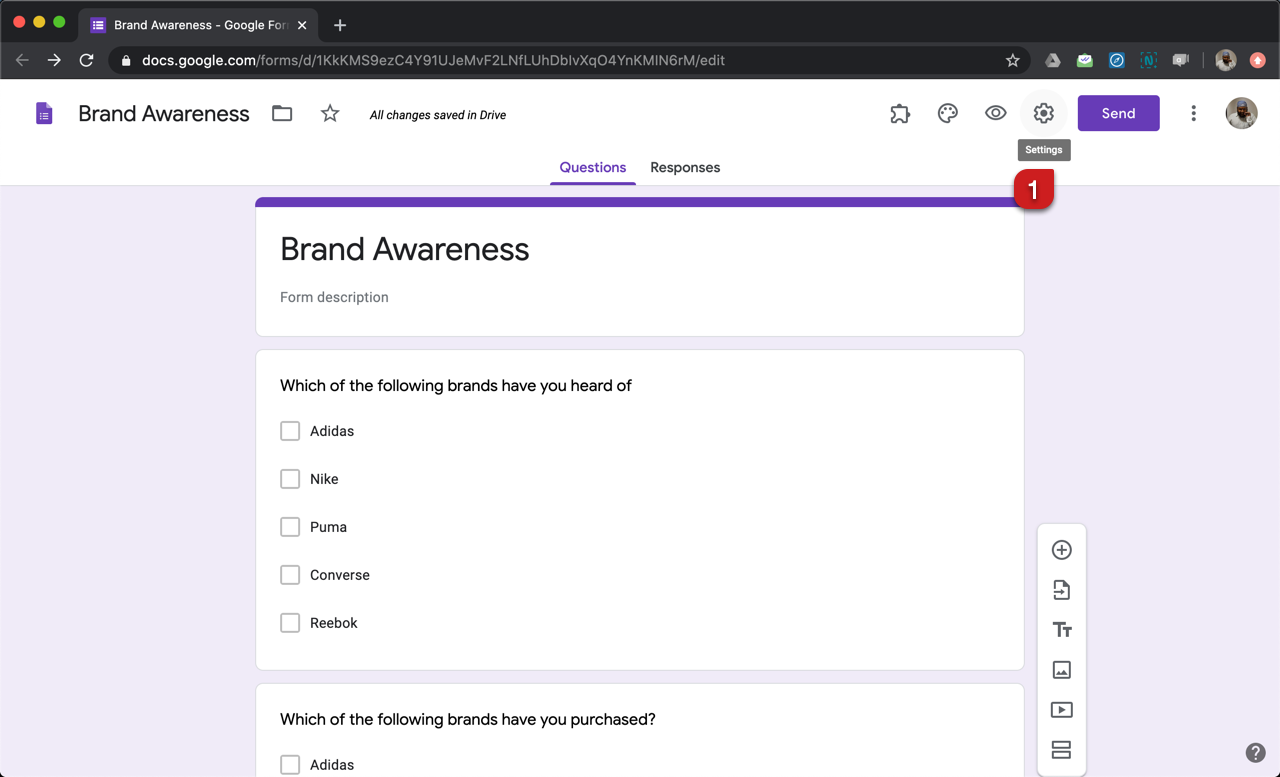
(Image Source: Formfacade)
Google Forms is one of the best assessment tools for teachers, which helps in creating free forms, basic quizzes, and surveys with minimal hassle. The simplicity of the tool is unmatched, allowing me to set up assessments and share them with students effortlessly and quickly.
The real-time response tracking and automatic data collection are invaluable for instant feedback and analysis. Integrated seamlessly with Google Workspace, it enhances collaboration and productivity.
The tool is ideal for educators seeking a straightforward, cost-effective solution for basic assessments that do not require advanced features but still offer reliability and ease of use.
Pros:
- Google Forms is free to use with any Google account, making it an accessible option for educators with limited budgets.
- The platform supports various question types, including text, multiple-choice, and dropdown, providing flexibility in designing assessments.
- It provides real-time collaboration, allowing multiple users to edit forms simultaneously, which is useful for team projects and co-teaching scenarios.
- Google Forms includes automatic data collection and visualization in Google Sheets, simplifying the process of analyzing responses.
- Responses can be collected via email, links, or embedded forms, offering multiple ways to reach students and gather data.
Cons:
- It lacks advanced analytics and reporting features, which can be a drawback for educators needing in-depth data analysis.
- The platform does not support multimedia integration in questions, limiting the types of content that can be included.
Pricing: Starts at $12/month/user. Billed annually.
3. Kahoot – Best for Gamified Quizzes
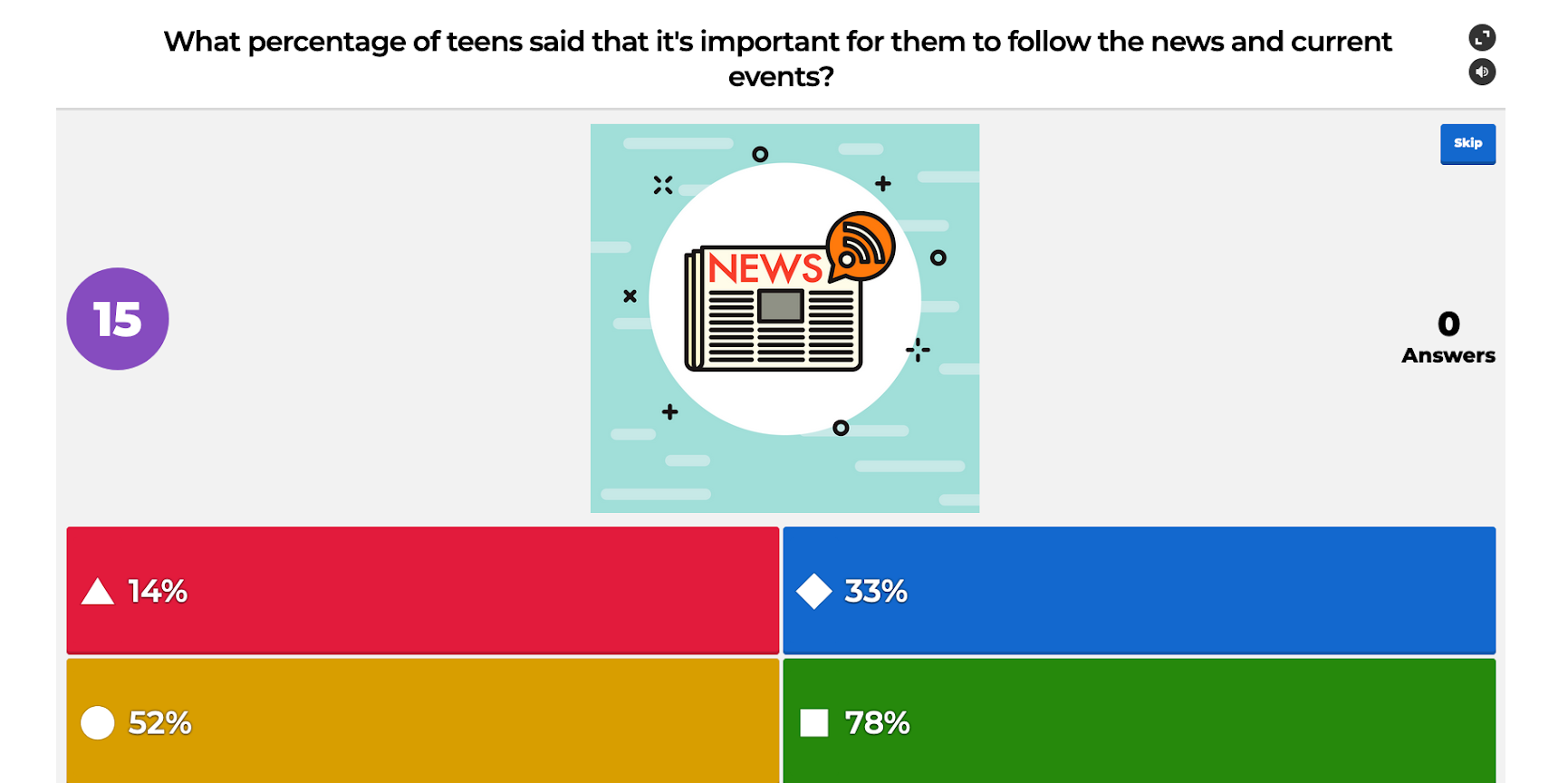
(Image Source: Stanford)
Kahoot has revolutionized the way teachers engage with students through its gamified quizzes. By turning quizzes into interactive games, Kahoot fosters a fun and competitive learning environment that significantly boosts student motivation and participation.
With a vast library of pre-made quizzes and the ability to create custom ones, you can easily integrate engaging activities into my lesson plans.
I also love the instant feedback and dynamic visuals that keep students attentive and excited about learning. So, Kahoot is perfect for educators who want to make learning enjoyable and interactive, ensuring that students retain information through a playful yet educational approach.
Pros:
- It supports live quizzes and asynchronous assignments, providing flexibility in how and when assessments are delivered.
- Kahoot includes a large library of pre-made quizzes and resources, which can save educators time in quiz creation.
- It allows for multimedia integration, including images and videos, enhancing the visual appeal and interactivity of quizzes.
- The tool supports various question types, including puzzles and polls, allowing for diverse and creative assessments.
- It is accessible on multiple devices, including smartphones and tablets, making it convenient for students to participate from anywhere.
Cons:
- The free version has limited features and customization, which may not meet the needs of more advanced users.
- There can be issues with internet connectivity during live sessions, which can disrupt the quiz-taking experience.
Pricing: Starts at $19/host/month. Billed annually.
4. Flip – Best for Video Assessments
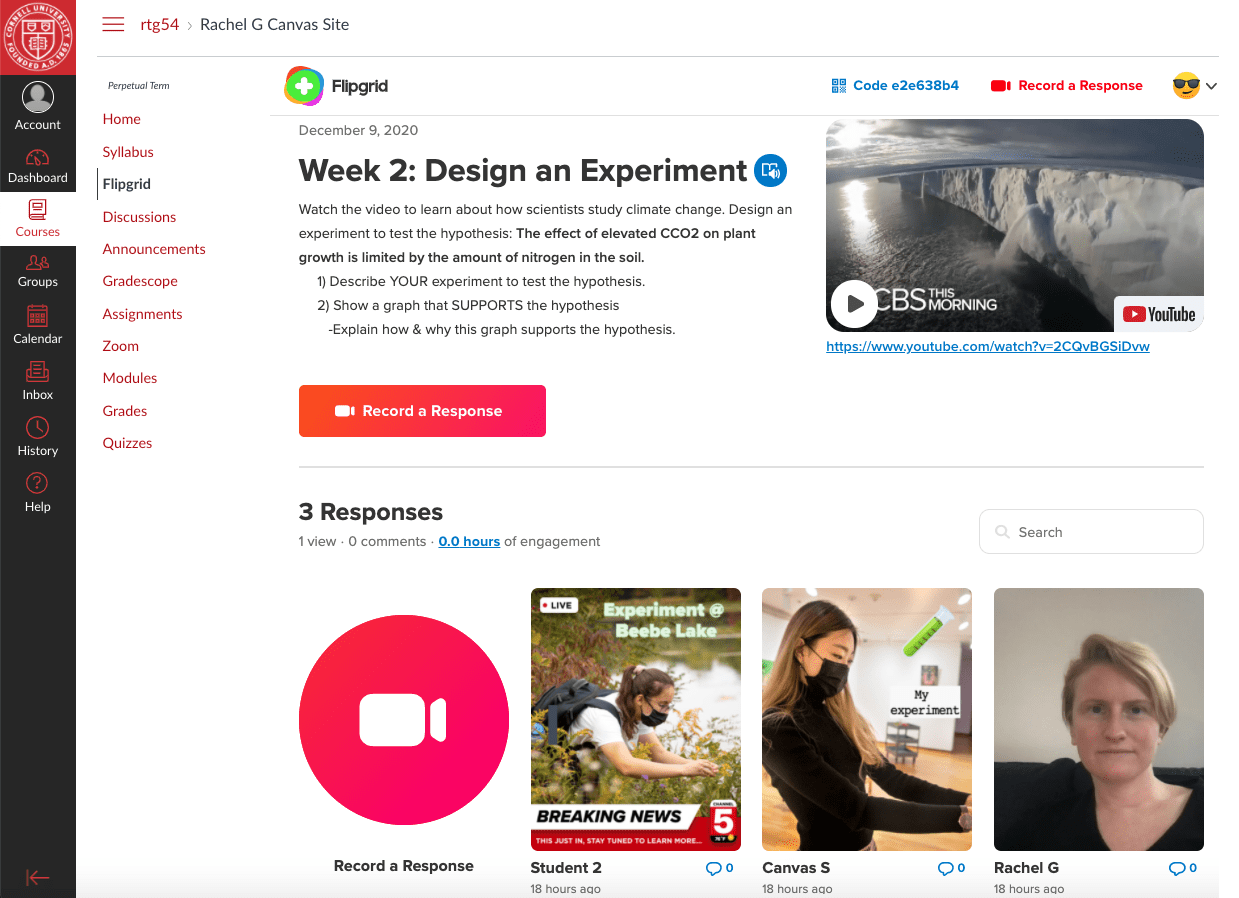
(Image Source: Cornell.edu)
Flip is an exceptional tool for conducting video assessments, offering students a platform to express their knowledge and creativity through video responses. This multimedia approach provides a deeper understanding of student comprehension and communication skills, which are often missed in traditional written tests.
The user-friendly interface makes it easy for students to record and share their videos, fostering a more engaging and personal assessment experience.
Flip is particularly beneficial for subjects like language arts, where verbal communication and presentation skills are crucial, and this is what I like the most about it. It’s an excellent choice for teachers who want to incorporate diverse assessment methods that capture a fuller picture of student abilities.
Pros:
- It includes a variety of interactive tools, such as video comments and reactions, fostering a more interactive learning environment.
- Flip allows for collaborative learning with group video discussions, encouraging peer interaction and collaboration.
- It provides integration with popular LMSs, including Google Classroom and Microsoft Teams, ensuring it fits smoothly into existing educational workflows.
- The tool supports various media formats, including images, videos, and links, allowing for diverse and rich content in assessments.
- Flip offers privacy settings to control who can view and respond to videos, ensuring that student data is protected.
Cons:
- Video uploads can be time-consuming and require a stable internet connection, which may be a barrier for some students.
- The platform may not be suitable for text-based assessments, limiting its versatility for different types of evaluations.
Pricing: Custom pricing.
5. Mentimeter – Best for Live Quizzes
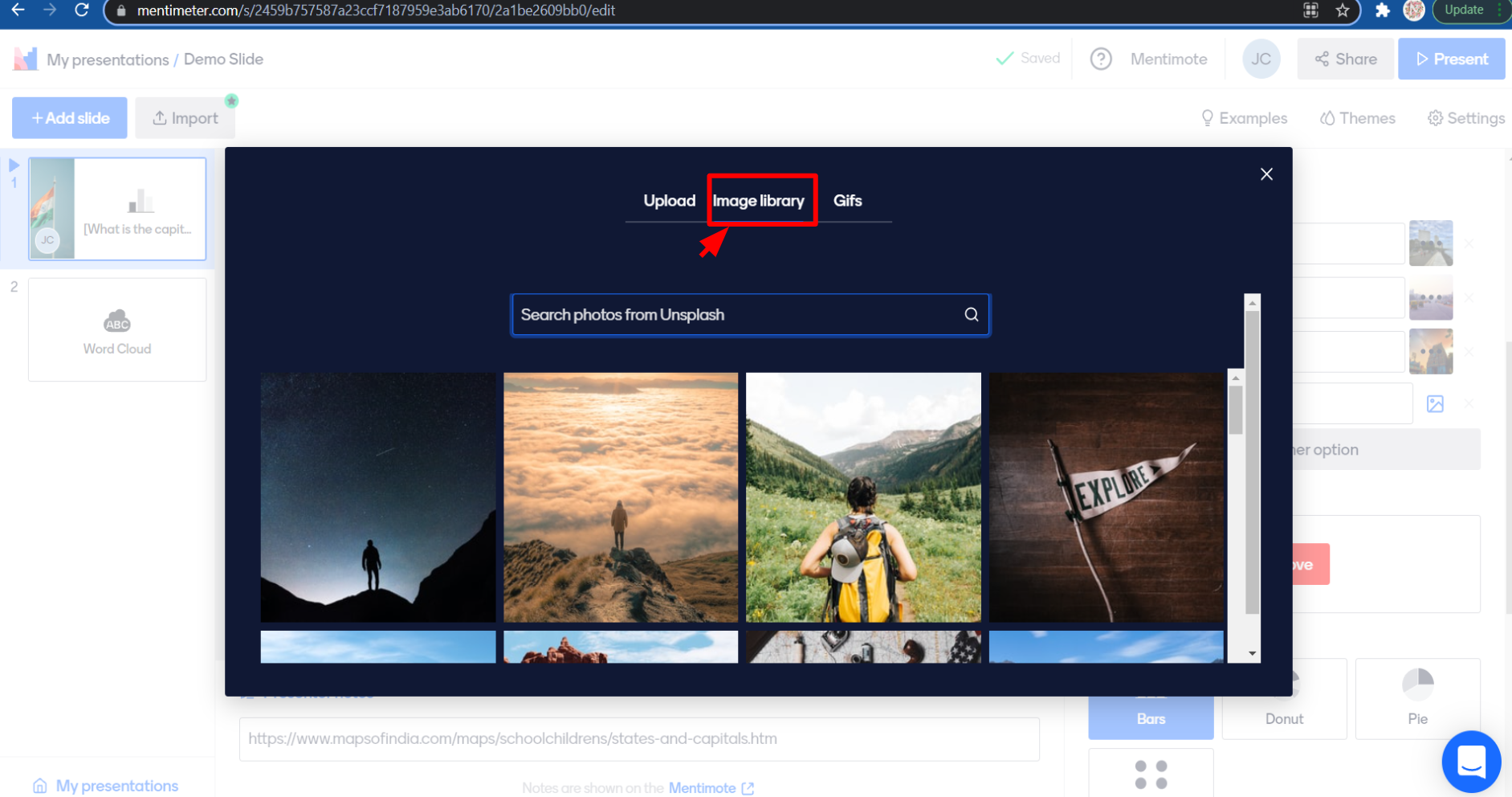
(Image Source: IPSR Solutions)
For live quizzes and immediate feedback, Mentimeter is my top recommendation. Its interactive features allow you to conduct real-time assessments, gauging student understanding instantly and adjusting your teaching accordingly.
The variety of question types and visualizations available in Mentimeter keep students engaged and actively participating. It is particularly useful in large classes where instant feedback can help identify common misunderstandings.
This tool is ideal for educators looking to create dynamic and interactive assessments that adapt to the classroom’s needs, promoting a more interactive and responsive learning environment.
Pros:
- The platform provides instant feedback and data visualization, helping educators quickly gauge student understanding.
- Mentimeter supports multimedia integration, including images and videos, enhancing the visual appeal and interactivity of assessments.
- It offers seamless integration with presentation tools like PowerPoint and Google Slides, allowing for smooth transitions during presentations.
- The tool is accessible on multiple devices and does not require participants to create accounts, making it convenient for students to participate.
- Mentimeter provides detailed analytics and reporting features, helping educators analyze response data and improve their teaching strategies.
Cons:
- Advanced customization options are locked behind higher-priced plans, making them inaccessible to users on a tight budget.
- There can be a learning curve for new users to understand all features, which may require additional training and time investment.
Pricing: Starts at $11.99/presenter/month. Billed annually.
6. Socrative – Best for Formative Assessments
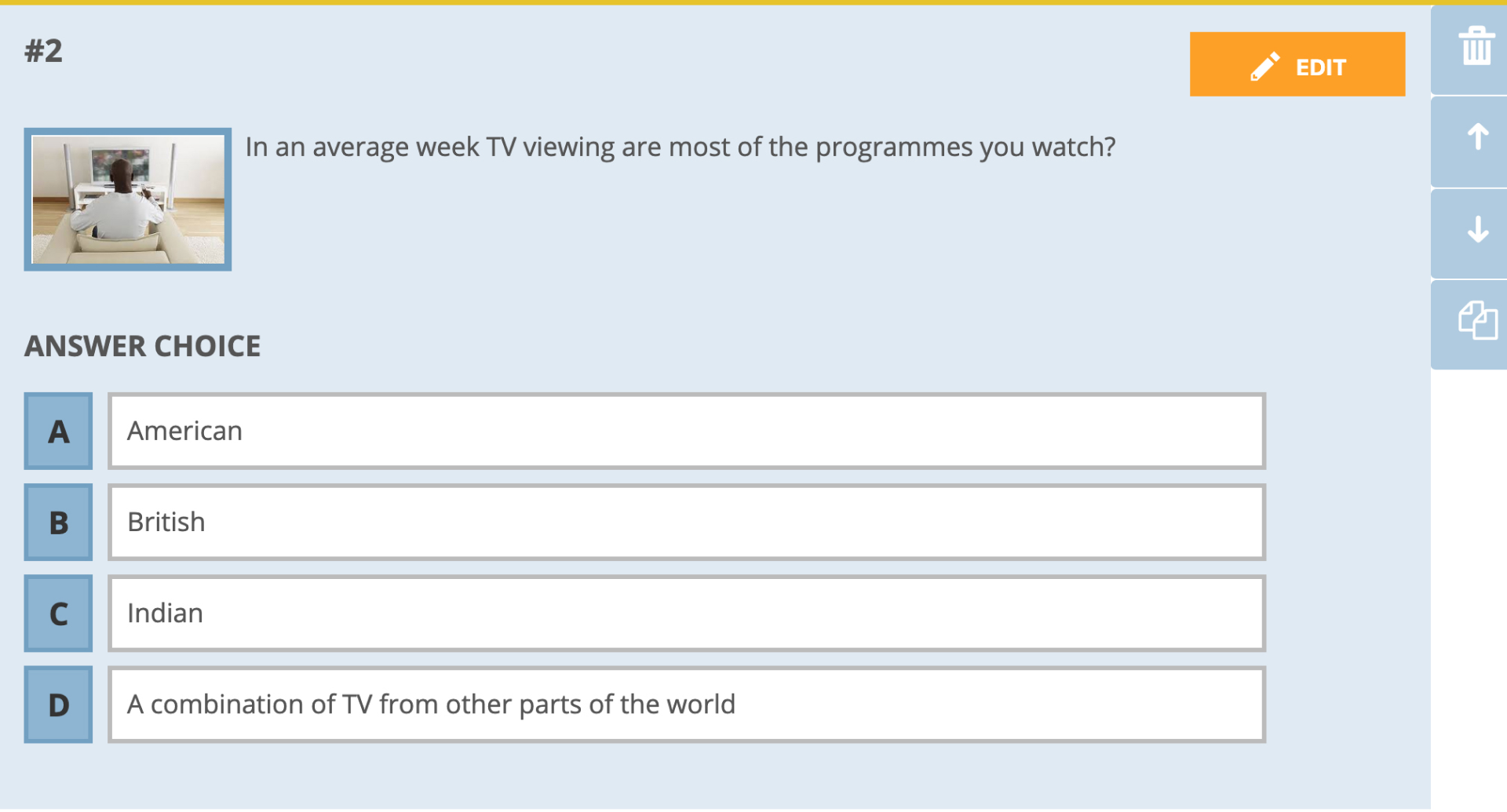
(Image Source: Socrative)
Socrative is an interesting tool for conducting formative assessments in classrooms. Its range of question types and real-time analytics provide valuable insights into student progress, helping teachers tailor the instruction to address individual learning needs.
The immediate feedback feature is particularly beneficial, allowing students to understand their mistakes and learn from them on the spot. Socrative’s ease of use and comprehensive reporting make it ideal for continuous assessment and improvement.
No doubt, this perfect for educators who prioritize formative assessments to guide their teaching strategies and enhance student learning outcomes.
Pros:
- It supports a variety of question types, including multiple-choice, true/false, and short answer, providing flexibility in designing assessments.
- Socrative allows for anonymous responses, encouraging honest feedback from students.
- It includes a library of pre-made quizzes that can be customized, saving educators time in quiz creation.
- The tool supports multiple languages, making it accessible to a wider audience.
- Socrative offers integration with popular LMSs, including Google Classroom and Canvas, ensuring it fits smoothly into existing educational workflows.
Cons:
- Some users report occasional technical glitches and slow loading times, which can disrupt the quiz-taking experience.
- The platform may not be as engaging as game-based assessment tools, limiting its appeal to students.
Pricing: Starts at $9.99/seat/month. Billed annually.
7. Jotform – Best for Building Online Forms With Payment Gateways

(Image Source: Jotform)
Jotform stands out for its versatility in creating online forms, especially those requiring payment integration. Its intuitive drag-and-drop interface and extensive template library simplify form creation.
I have used Jotform for assessments, managing event registrations, collecting course fees, and other administrative tasks. I like its built-in payment gateways, which ensure secure and seamless transactions and add a professional touch to the process.
So, if you need a multifunctional tool that can handle assessments and administrative functions, streamlining various aspects of educational management, this can be a good option.
Pros:
- Jotform offers a wide range of customizable form templates, allowing educators to create assessments tailored to their needs.
- The platform provides real-time data collection and reporting, helping educators analyze response data and improve their teaching strategies.
- Jotform integrates with over 100 apps, including Google Drive and Dropbox, allowing for streamlined workflows and easy data sharing.
- It offers a user-friendly drag-and-drop form builder, making form creation simple and quick, even for users with minimal technical skills.
- The tool supports conditional logic, enabling dynamic form behavior based on user responses, and enhances the interactivity of assessments.
Cons:
- Advanced customization options require a subscription, making them inaccessible to users on a tight budget.
- The platform is not specifically designed for educational assessments, so it may lack some specialized features found in other tools.
Pricing: Starts at $34/month. Billed annually.
8. Quizlet – Best for Curriculum-Based Assessments

(Image Source: AES English)
Quizlet is one of the most intelligent evaluation tools for teaching, and it helps create curriculum-based assessments. Its flashcard system aids in memorization and recall, which is crucial for subjects requiring detailed knowledge retention.
You can create custom study sets and quizzes aligned with the curriculum, ensuring that assessments are targeted and effective. Quizlet’s interactive learning modes, such as matching games and test simulations, make studying engaging and enjoyable for students.
The platform also provides a large library of pre-made study sets that save educators time and can be handy in creating content for teaching.
Pros:
- It supports multimedia integration, including images and audio, enhancing the visual and auditory appeal of study materials.
- Quizlet includes options for collaborative study and group work, encouraging peer interaction and cooperation.
- The tool offers real-time feedback and progress tracking, helping students understand their performance and identify areas for improvement.
- Quizlet is accessible on multiple devices, including smartphones and tablets, making it convenient for students to study from anywhere.
- It provides seamless integration with popular LMSs, ensuring it fits smoothly into existing educational workflows.
Cons:
- The free version has limited features and study modes, which may not meet the needs of more advanced users.
- The platform may not be suitable for in-depth assessments, limiting its use for more comprehensive evaluations.
Pricing: Starts at $1/month.
9. CommonLit – Best for Assessment Series
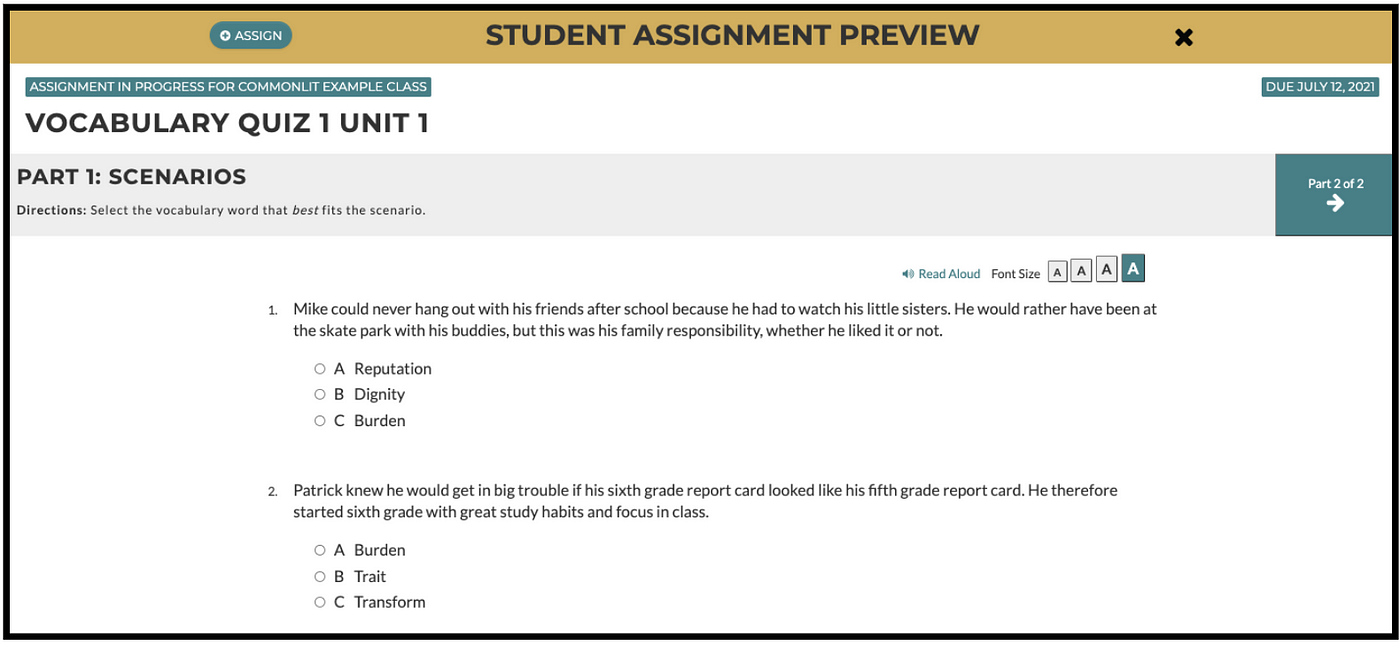
(Image Source: Medium)
CommonLit is a wonderful tool for conducting comprehensive assessment series, particularly in literacy and reading comprehension. It offers an extensive library of high-quality texts paired with thoughtful, standards-aligned questions.
I like its detailed analytics, which helps track student progress and identify areas for improvement, allowing for targeted instruction. Besides, its focus on critical thinking and textual analysis makes it an invaluable resource for developing students’ reading skills.
It even allows you to conduct in-depth assessments over time, providing a clear picture of student growth and areas needing attention.
Pros:
- The platform supports differentiation with multiple reading levels for each passage, ensuring that all students can engage with the material.
- CommonLit includes options for guided reading and annotation, enhancing students’ reading comprehension and critical thinking skills.
- The tool provides integration with Google Classroom and other LMSs, ensuring it fits smoothly into existing educational workflows.
- It offers a variety of question types, including multiple-choice and short answer, providing flexibility in designing assessments.
- CommonLit is accessible on multiple devices, making it convenient for students to access reading materials from anywhere.
Cons:
- The platform may not be suitable for non-reading-based assessments, limiting its versatility for different types of evaluations.
- It experiences technical glitches when the internet connection is unstable.
Pricing: It has a school plan that starts at $2,500/year/school.
10. iSpring QuizMaker – Best for Integrating Quizzes With Learning Management Systems
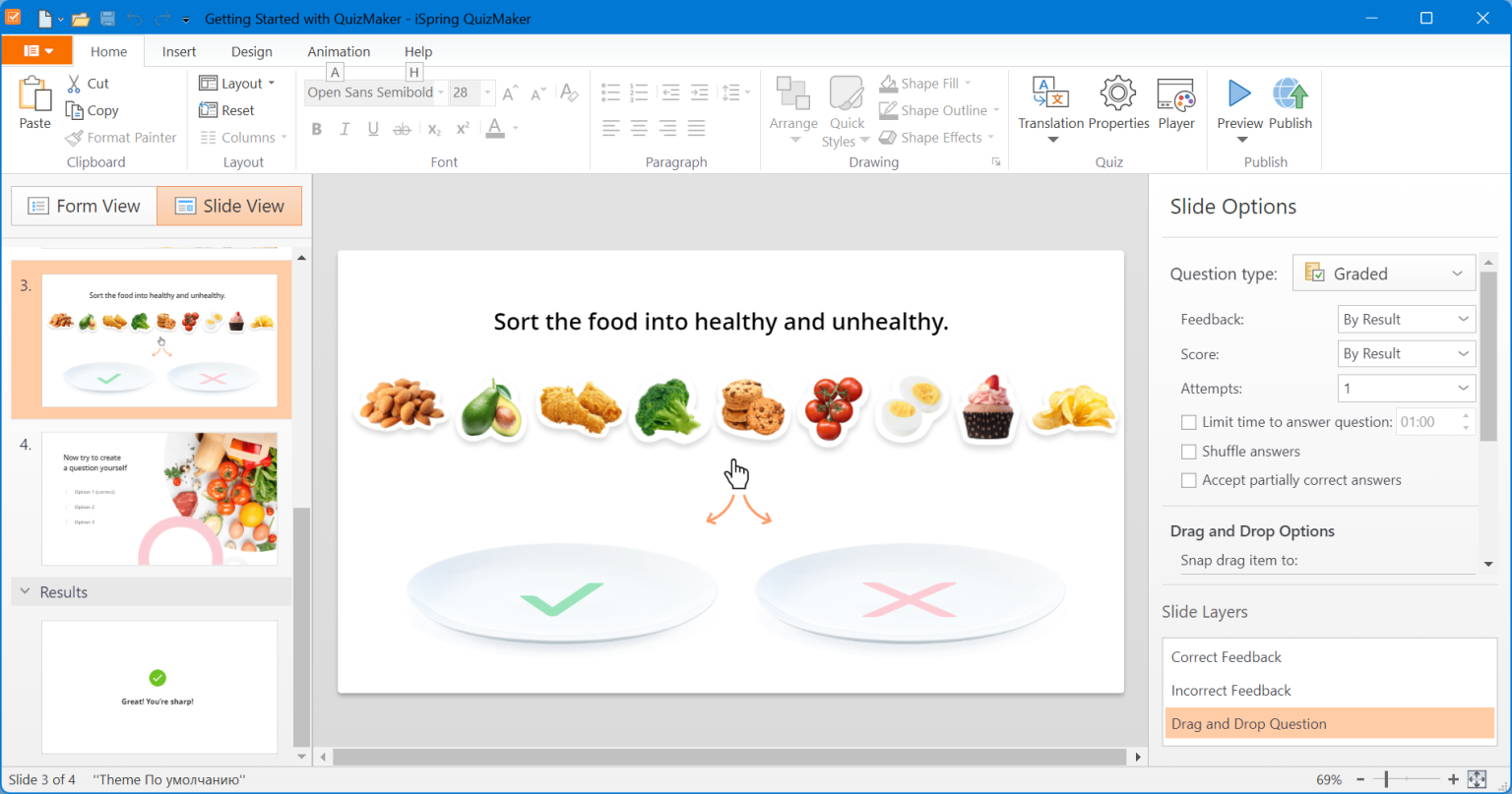
(Image Source: iSpring QuizMaker)
iSpring QuizMaker is my top choice for creating quizzes that integrate seamlessly with learning management systems (LMS). Its powerful features and SCORM compatibility ensure that quizzes can be tracked and reported within any LMS.
The extensive customization options allow you to design professional-quality assessments tailored to my curriculum. The tool’s user-friendly interface makes it easy to create detailed quizzes that provide comprehensive assessment data.
If you are looking for a reliable solution that works within your existing LMS, also ensuring smooth
Pros:
- It has extensive customization options for quiz appearance, including themes, colors, and fonts.
- It offers comprehensive scoring options, including point-based and percentage-based scoring.
- You get smart, collaborative features that allow multiple users to work on quizzes simultaneously.
- The tool supports branching scenarios, enabling dynamic quiz paths based on student responses and enhancing the interactivity of assessments.
- iSpring QuizMaker provides real-time feedback and grading, helping students understand their performance immediately.
Cons:
- Although customizable, the available templates may not suit all design preferences or branding requirements.
- There is a learning curve for new users to fully utilize all features, which may require additional training and time investment.
Pricing: Starts at $470/author/year.
FREE. All Features. FOREVER!
Try our Forever FREE account with all premium features!
Evaluation Criteria
The evaluation of assessment tools in this article follows a structured, classroom-focused approach to ensure a fair and useful review. Each factor is chosen for its impact on teaching and learning:
1. User Reviews / Ratings
Direct feedback from teachers and schools provides a real-world perspective on satisfaction, reliability, and challenges with each tool.
2. Essential Features & Functionality
We examine whether the tool supports diverse assessment needs, question variety, reporting, LMS integration, and security, so it’s effective in actual classroom use.
3. Ease of Use
An assessment platform must be intuitive for both teachers and students. We look at the design, setup time, and overall navigation to ensure smooth adoption across all skill levels.
4. Customer Support
Reliable onboarding and responsive support are critical. We evaluate how quickly and effectively each provider helps educators resolve issues and make the most of the tool.
5. Value for Money
We compare pricing with the quality of features, analytics, and long-term benefits, helping educators see whether a tool is a sustainable investment.
6. Personal Experience / Experts’ Opinions
Insights come from real teaching scenarios and the perspectives of education experts, ensuring that the evaluation reflects both practical classroom use and professional guidance.
Online vs. Traditional Assessment: The Real Comparison
When it comes to choosing between online and traditional assessment tools in teaching, the differences go beyond convenience. Each approach impacts how quickly you get results, how accessible learning is for students, and even the long-term costs for your institution. Here’s a side-by-side look at the real comparison:
| Parameter | Online Tools | Traditional Methods |
|---|---|---|
| Getting Results | Instant feedback and analytics | Wait days or weeks for insights |
| Student Access | 24/7 availability from any device | Limited to your classroom schedule |
| Your Workload | Automated analysis and reporting | Manual grading and calculation |
| Long-term Costs | Often more economical over time | Ongoing paper, printing, storage costs |
| Technical Considerations | Dependent on internet and devices | No technology-related issues to worry about |
| Reporting / Transcripts | Easily store transcripts to analyze performance and progress anytime | Challenging to store and analyze large amounts of data |
| Data Security | Data security depends on the platform you choose | Complete physical control |
My Implementation Tip: Always test your chosen tool with a small group first. I learned this the hard way when a “perfect” platform crashed during my first big assessment. A pilot test saves you from classroom disasters.
The Real Challenges You’re Facing (And How to Solve Them)
Let me address the elephant in the room. I’ve talked to hundreds of teachers about their assessment frustrations, and these issues come up repeatedly. If you’re nodding along, you’re not alone.
1. You’re Drowning in Manual Work
I get it. You chose teaching to inspire young minds, not to spend your weekends entering data into spreadsheets. Many popular platforms still require extensive manual work because they lack proper automation features.
What You Can Do: Look for assessment tool examples for teachers that offer auto-graded quizzes, instant analytics, and one-click report generation. Your time is too valuable for manual data entry.
2. Your Current Tools Feel Limited and Boring
If you’re stuck with Google Forms because it’s free, I understand the frustration. Basic tools often lack the visual appeal and question variety that keep students engaged. Your assessments end up looking generic and feeling impersonal.
What You Can Do: Invest in platforms that offer customizable templates, multimedia integration, and interactive question types. The engagement boost often justifies the cost.
3. The Technology Feels Overwhelming
Not everyone is a tech wizard, and that’s perfectly okay. I’ve seen excellent teachers avoid digital assessment tools because the learning curve feels too steep.
What You Can Do: Start with user-friendly platforms that offer excellent customer support and training resources. Begin with basic features and gradually explore advanced options as you get comfortable.
4. Your Students Aren’t Completing Non-Graded Assessments
This is incredibly frustrating. You create a formative assessment to check understanding, but half your students don’t bother completing it because “it doesn’t count for a grade.”
What you can do: Choose tools that make assessments inherently engaging through gamification, immediate feedback, interactivity, and social learning elements. When assessments are interesting, students complete them regardless of grading.
5. Finding Tools for Your Subject Area
If you teach specialized subjects involving mathematical formulas, scientific notation, or multilingual content, you know how challenging it is to find assessment tools that handle your specific needs.
What You Can Do: Look for platforms specifically designed for your subject area, or choose flexible tools that allow custom formatting and multimedia integration.
AI-Powered Assessment Tools in Teaching: Your Questions Answered
You’ve probably heard about AI in education and wondered whether it’s helpful or harmful. Let me share what I’ve learned from working with AI-powered assessment tools.
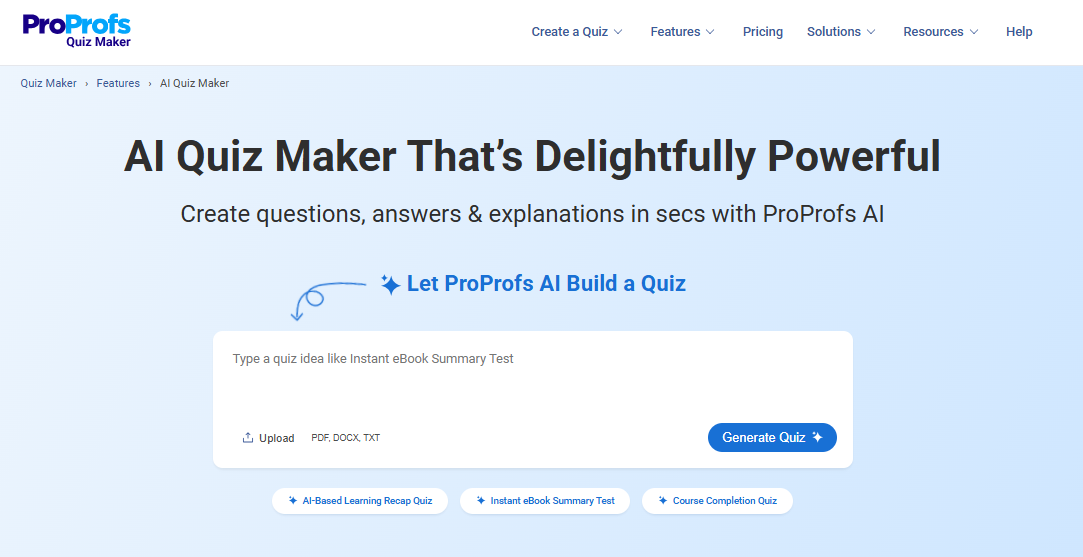
How AI Actually Helps Your Teaching
- Question Generation That Saves Hours: AI can create diverse, curriculum-aligned questions in minutes. I’ve used this to generate practice tests, create multiple versions of quizzes, and develop formative assessments quickly.
- Instant Pattern Recognition: AI processes student responses immediately, identifying learning patterns and knowledge gaps that might take you hours to spot manually.
- Personalized Learning Paths: Advanced systems adapt question difficulty based on student performance, creating customized experiences that challenge without overwhelming.
- Predictive Analytics: AI can forecast which students might struggle with upcoming concepts, letting you provide support before problems develop.
- Effortless Quiz Creation From Documents: AI lets you convert documents to quizzes in seconds, turning lesson notes or PDFs into interactive assessments without extra effort.
Addressing Your Legitimate Concerns
- Student Privacy: I always recommend checking that AI platforms comply with FERPA and other education privacy laws. Look for transparent data handling policies and avoid platforms that aren’t clear about data use.
- Algorithmic Bias: AI systems can perpetuate existing inequalities if their training data isn’t diverse. Always review AI-generated content and supplement with your professional judgment.
- Maintaining Your Teaching Voice: Use AI as a starting point, not a replacement. I always customize AI-generated feedback to reflect my teaching style and add personal observations.
FREE. All Features. FOREVER!
Try our Forever FREE account with all premium features!
Your Next Steps to Better Assessment
We’ve covered what assessment tools in teaching can do for you: save time, boost engagement, and give you insights you can actually use. The most important step now is simple: start small. Pick one tool that addresses your biggest need and try it with one class.
For example, if grading takes over your evenings, a tool like ProProfs Quiz Maker can automate scoring and free up your time. If engagement is the challenge, interactive quizzes will bring students back into the process. And if it’s data you need, real-time reports will show you where to focus your teaching energy.
The teachers who see the most success don’t change everything overnight. They use technology to strengthen what they already do well. That’s your starting point, too. Choose one tool, test it, and see how it changes your classroom dynamic.
Your students deserve assessments that help them learn, and you deserve systems that make teaching easier. The first step is yours.
Frequently Asked Questions
What are some practical assessment tools examples for teachers outside of quizzes?
Beyond quizzes, teacher assessment tools include digital portfolios, reflection journals, peer review platforms, and video-based responses. These tools for assessment in education capture creativity, collaboration, and problem-solving skills that traditional tests often overlook.
How do schools evaluate which assessment tools in education are worth adopting?
When choosing tools for assessment in education, schools often weigh factors like integration with existing LMS, data security, accessibility for students with diverse needs, and reporting features. The right tool should reduce teacher workload while improving instructional decision-making.
Are free teacher assessment tools reliable for long-term use?
Free options can be useful for basic classroom activities, but they often lack advanced analytics, adaptive testing, or secure exam settings. For sustainable use, many educators combine free assessment tools examples for teachers with paid platforms that offer richer features and compliance with data privacy standards.

 We'd love your feedback!
We'd love your feedback! Thanks for your feedback!
Thanks for your feedback!







